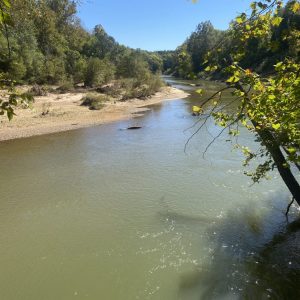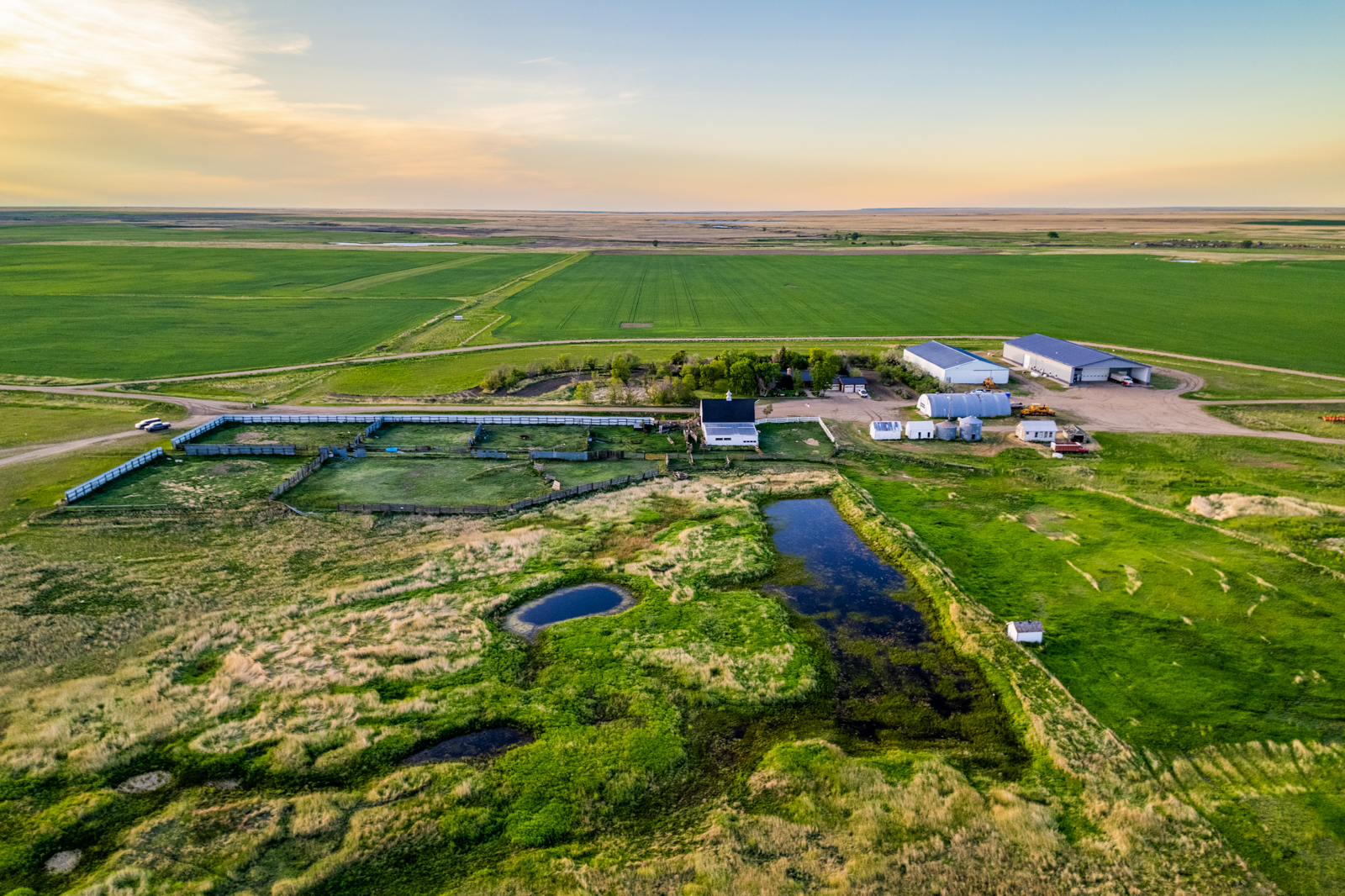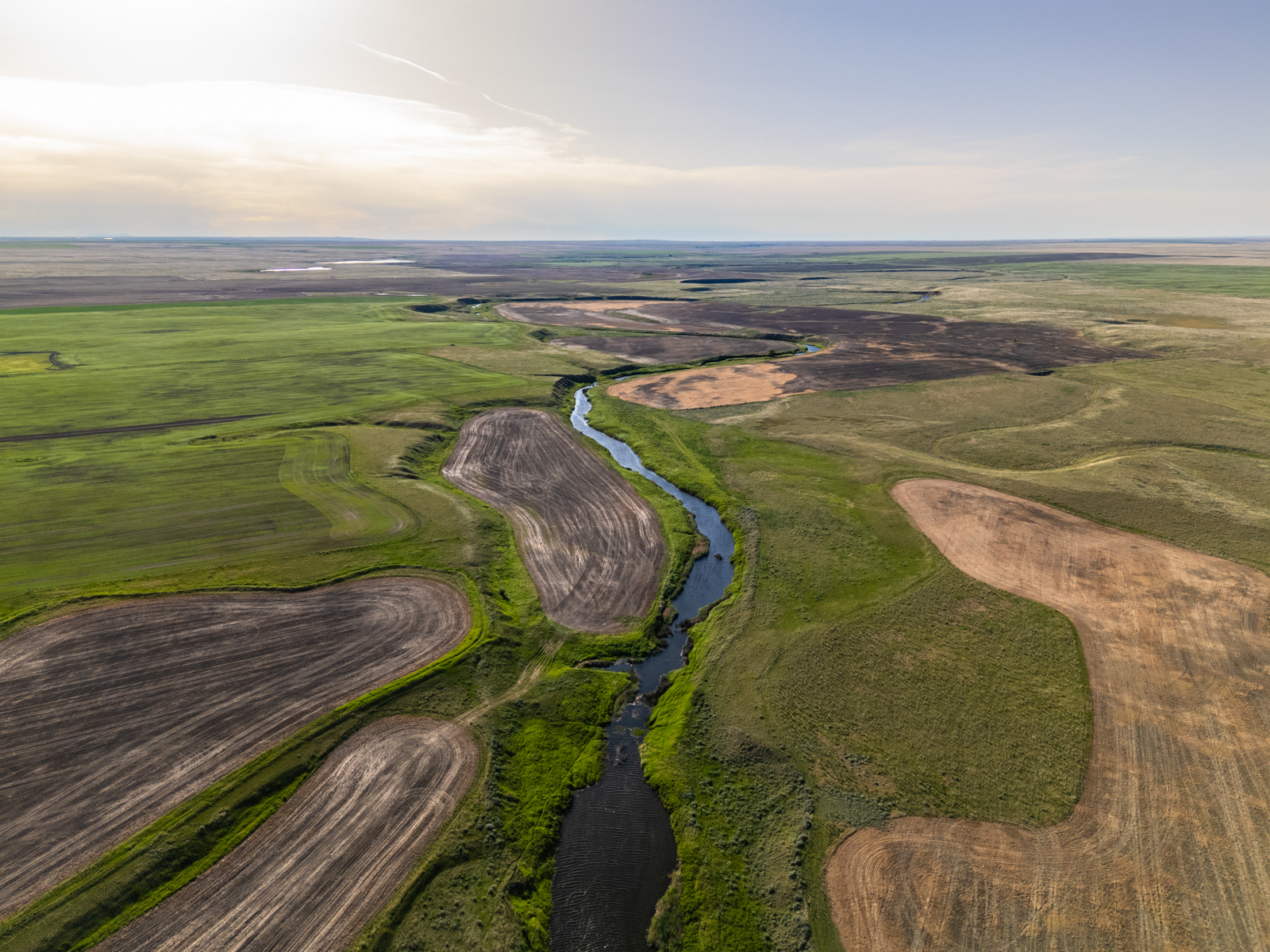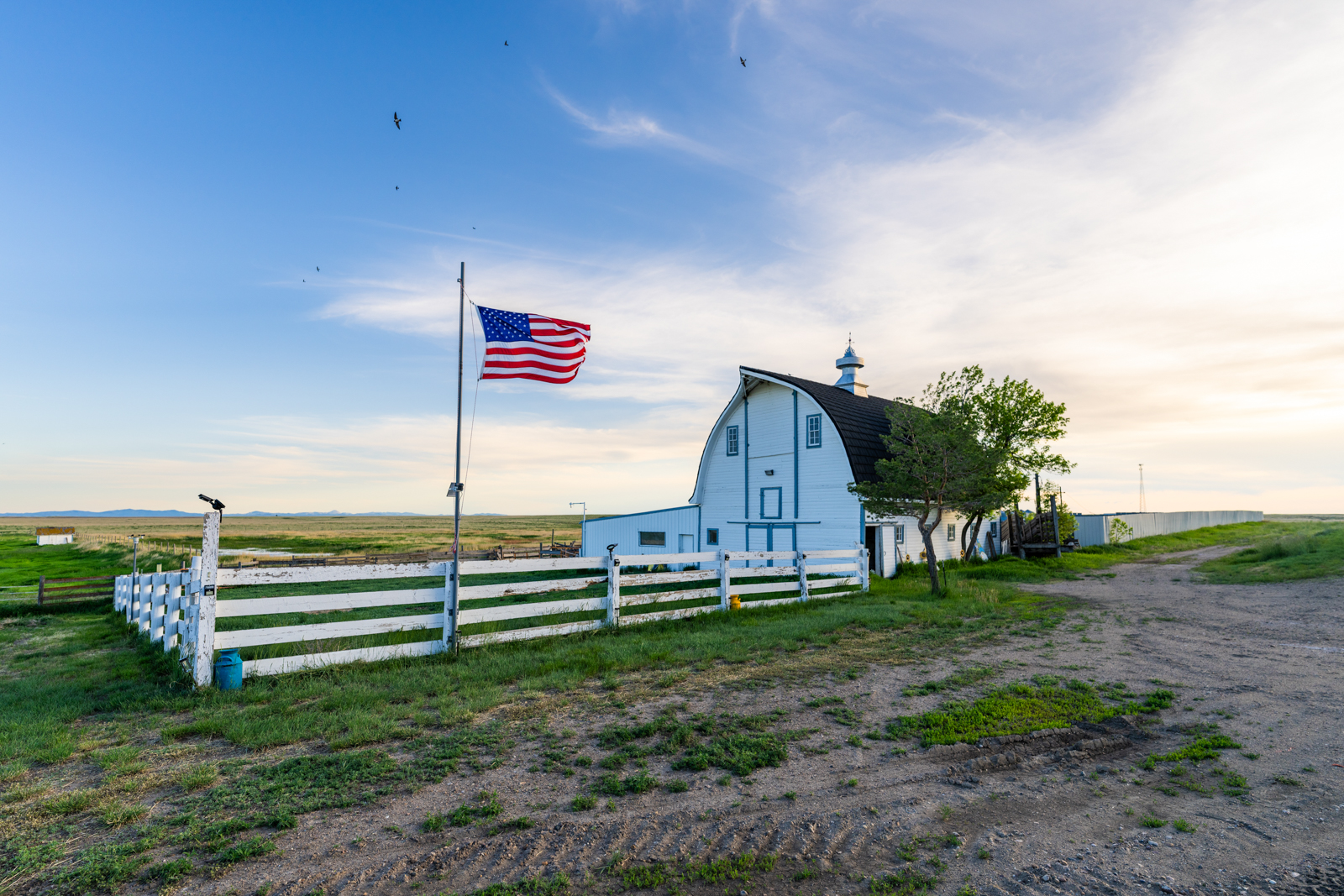
The first half of 2025 brought signs of transition for rural land and ranch real estate market trends—not a slowdown, but a shift toward a more balanced, thoughtful pricing environment.
“Right now, there is more economic and geopolitical uncertainty than in 2024,” said Bill Calton, Director of the Southeastern Market for Live Water Properties, who has over 40 years in all facets of the real estate business. “While some investors are proceeding with more caution, many are using this slight shift in the market to explore meaningful, well-aligned acquisitions or dispositions.”
Some of the exceptional new listings include the water-rich ±470-acre Crystal Ranch near Mountain Home, Utah; the ±16,532-acre Antlers Ranch near Meeteetse, Wyoming offering superlative wildlife; the ±3,896-acre Anderson Ranch near Mountain Home, Idaho, which is an organic potato farm in an idyllic setting; and the ±2,459-acre Island 34 Duck Club in Lauderdale, County, Tennessee, which is home to an “unimaginable number of ducks.”
“We’re the same people doing business the same way, but the phone is ringing now with people asking us to consider listing their properties,” Merritt said. “There are intriguing listing opportunities all over the place, and I’m excited about what is in front of us.” According to Merritt, the market remains relatively strong, as is interest, and transaction volume is solid. In fact, the firm is currently closing deals in Idaho, Wyoming, Montana, Colorado, and Alabama. But, he said, the significant inventory increase will affect Buyers and Sellers at some point.

“For the past 10 years, the market has been thirsty for inventory–we’re getting it now,” Merritt said. “As inventory levels normalize, we’re seeing buyers engage more deliberately—a sign of a market maturing rather than contracting.”
A larger inventory means Buyers have more options, so they can move more deliberately until they find the ideal property. According to Merritt, this hasn’t been an option in the past decade when demand for land outstripped supply, and Sellers were in the driver’s seat.
We are also noting price reductions on properties offered by other brokerages throughout the marketplace. Price reductions were non-existent during the COVID boom and its immediate aftermath, allowing people to “throw up prices because they’d stick.”
“Personally, I think the market will remain strong because real estate is always a wise investment, but I think the period of super high prices is over,” Merritt said. “In the coming cycle, I believe cash will be king, and strong Buyers will be able to negotiate.” Historically, recreational ranch real estate is a self-leveling business, meaning that Buyers and Sellers find a mutually agreeable selling point.
“As Sellers adjust to evolving Buyer expectations, pricing strategy and clear value articulation are becoming more important than ever.” Merritt said. “It may take some time for them to find each other and establish a new balance in the marketplace.”
While professionals are debating whether the market is softening or just normalizing, it is clear that accurate pricing is becoming imperative. Sellers and their representatives need to price properties based on current market realities instead of the historic highs marked during the COVID boom. Transitional markets make good, defensible comps even more important.
“In this environment, I advise our Southern Brokers to stay on top of the comps within a 25-mile-to-50-mile radius, or within a 2 to 3 hour drive for our Western Brokers, of the properties they are listing,” Calton said. “It is essential to understand what is selling and the facts around that, as well as what is not selling and the facts around that. Without ground-truthing, conversations with Buyers and Sellers become emotional and potentially non-productive.”
As for Calton, he will be paying close attention to a property’s market exposure or Days on Market (DOM). In his experience, a property becomes ‘aged’ if it is hasn’t sparked significant interest within its first four months on the market. At that point, it is time to carefully examine the property to uncover any issues, including price, that may be deterring Buyers.
“To succeed year after year, you have to speak from an informed position and continue to earn and hold clients’ trust,” Calton said. “You have to do details better than anyone else in the business.”
And in a changing marketplace, it is imperative to stay focused on the things that matter.
“It’s easy to be distracted by the noise, so we’re going to keep our eyes on what is in front of us,” Merritt said. “In a dynamic market, our commitment remains unchanged: to guide our clients with clarity, precision, and confidence—ensuring success on both sides.”
A CLOSER LOOK AT THE MARKETS WE REPRESENT
Mountain West:
Wyoming:
Wyoming’s agricultural land and ranch real estate market trends remains stable, with cropland and pasture values up approximately 2–4% year over year—cropland showing a 2.7% gain and pastureland roughly 4%—while overall farm and ranch real estate appreciated modestly, around 0.7% in 2024. Sales activity has stayed muted, particularly in premium ranch land segments, which have seen limited transactions and tight inventory, especially near Jackson Hole where land deals remain sparse, and cyclical volatility makes price data uneven. Local ranchers continue to dominate purchases—often using cash or equity backed financing—while strong cattle markets and still limited listings help underpin land values.
Concurrently, Wyoming properties located near Yellowstone and other high value recreational corridors like Jackson Hole are commanding premium prices, benefiting from the so called “Yellowstone effect,” which has driven ranch land values up nearly 28% in the past five years.
Looking ahead, moderate interest rate relief and growing listing activity may bring renewed interest from buyers; however, accurate pricing and brokerage expertise remain key in what is gradually moving toward a more balanced—yet still competitive—market.
Wyoming market insight provided by Latham Jenkins
Colorado:
Thus far in 2025, Colorado ranch real estate market trends have been dynamic. After a four-year run of unprecedented Buyer activity, there appears to be a new phase of pre-2020 normalcy taking shape.
In recent years, the limited inventory for high-quality sporting ranches was quickly absorbed by active Buyers who were prepared to move quickly to stave off competing Buyer interests. We’re now seeing a return to more disciplined Buyer activity and what can best be described as a leeriness towards pricing as more inventory makes its way to the market.
The message to Sellers and potential Sellers is the importance of supportable, data-driven pricing and professional exposure. There is no shortage of Buyers, particularly at the high-end, though now with the benefit of increasing optionality those Buyers have the ability to take more time to learn the market and the inherent values that impact a particular property.
As has always been the case, off-market deals continue to occur when the parameters of a Buyer-client align with Sellers known to us, who prefer not to offer their ranches publicly.
Colorado market insight provided by Brian Hartley
Idaho:
Over the past three years, Idaho’s ranch real estate market trends have been defined by limited inventory and strong competition. High-quality properties were scarce, and Sellers enjoyed strong leverage, often commanding top dollar in a red-hot marketplace.
But as we move through 2025, the pendulum is clearly swinging. More inventory is coming online, and quality Idaho ranches are beginning to surface across the state. The result is a market that feels more balanced for the first time in years.
After a long period of tight supply, Buyers now have access to a wider range of properties, including many that haven’t changed hands in decades. Pricing is starting to normalize as Sellers adjust to a more competitive landscape, recognizing that the days of “name your price” listings are largely behind us.
Buyers, in turn, are regaining leverage; with more choices and a slower pace, they have time to conduct due diligence and negotiate favorable terms, especially in deals involving water rights, agricultural leases, or conservation potential. For Sellers, success now hinges on strategy—accurately pricing the land and clearly communicating its unique value, whether tied to live water, habitat, production capacity, or development potential.
The Idaho ranch market is no longer a runaway Seller’s market, nor has it tipped completely in favor of Buyers. Instead, we’re in a more thoughtful, deal-driven environment—one where preparation, quality, and local expertise matter more than ever.
Idaho market insight provided by Tate Jarry
Montana:
Ranch real estate market trends as well as farm sales in Montana are up 6% compared to this time in 2024, reflecting steady demand despite limited inventory.
Today’s Buyers are more sophisticated than ever, using advanced tools and resources to evaluate properties before making a move. As a result, A-plus Montana ranches—those with strong operational fundamentals, recreational value, and desirable locations—continue to move quickly. However, Sellers can no longer expect B-grade properties to command A-level prices and still see activity; pricing must align with quality and market expectations.
Overall, the Montana ranch market remains competitive, with discerning Buyers driving selectivity and velocity in top-tier transactions.
Montana market insight provided by Zach Robbins
The Southeast:
Georgia:
Georgia’s land and ranch real estate market trends remain steady in 2025, with a balanced dynamic between Buyers and Sellers. High-quality properties continue to attract interest, though the frenzied pace of the COVID years have given way to a more patient market. Today’s Buyers are thoughtful and selective, taking time to evaluate options and ensuring the property’s use aligns with their long-term goals.
Institutional and private Buyers alike are demonstrating a strong appetite for land with income potential—whether through timber, farming, or recreational leases—as well as for tracts with conservation or legacy value. This trend reflects a broader “flight to quality,” with investors prioritizing hard assets that offer both stability and enjoyment.
Success in Georgia’s current market hinges on presenting properties accurately and effectively. Getting qualified Buyers on the ground and having the opportunity to share the full story of the land remains essential. With more options now available, Buyers are placing increased value on well-managed, turn-key assets that clearly communicate their potential.
Georgia market insight provided by Jon Callaghan
Alabama:

The Alabama land market is showing strong signs of activity in 2025, particularly in regions known for recreational and agricultural value, as shown by Live Water Properties’ recent sale of the Cahaba Plantation property, nearly 2,000 acres of prime recreational land with over four miles of frontage on the famous Cahaba River. Demand remains steady for quality properties with income potential—whether through row crop production, timberland, or hunting leases—though Buyers are becoming more price-sensitive and selective than in recent years.
Inventory has increased across much of the state, providing Buyers with expanded choices and creating a more measured pace of transaction. Properties with turnkey infrastructure, well-managed habitat, or proven income streams continue to stand out. Buyers are especially drawn to tracts offering a balance of utility and natural beauty—land that supports both recreational use and long-term investment.
Overall, the Alabama market appears healthy, with an emphasis on realistic pricing and well-presented offerings. While not immune to broader economic uncertainty, Alabama’s affordability, natural resources, and central location in the Southeast continue to make it an attractive and resilient land investment market.
Alabama market insight provided by Jon Callaghan
South Carolina:
This Southeastern land market is currently experiencing a mixture of trends with certain areas seeing strong demand and rising values while others face overbuilding and slowing growth. Affordability and job opportunities continue to drive interest and relocations to the region, which has added to demand for both housing and land.
Diversity of land use beyond traditional residential or agricultural purposes is also promoting interest and market activity. Buyers are increasingly focused on properties that align with private recreation, sustainability/conservation, and cash-flow opportunities.
In South Carolina specifically, coastal counties lead the way in Turnover Ratio (the percentage of active land listings sold over the past 365 days) with six of the state’s top 10 counties represented. Further validation of growth and activity is highlighted by recent U.S. Census Bureau data, noting Jasper County as the nation’s fastest-growing county in terms of housing units.
In summary, the South Carolina land and ranch market trends appear steady overall. While factors like interest rates and stock market fluctuations still have an impact, the region’s strong fundamentals and growing population suggest continued opportunities for both Buyers and Sellers. For Sellers, values remain near historic highs in many areas, while Buyers have more leverage to negotiate a more fair due diligence period compared to previous years.
South Carolina market insight provided by Will Johnson






